Affiliate Disclaimer
Some links in this article are affiliate links. We may earn a small commission if you make a purchase through these links, at no extra cost to you. We only recommend products we find useful to our readersJoint discomfort, stiffness, and decreased mobility can make daily tasks difficult for those with arthritis. It can become challenging to perform essential functions like opening doors, standing for extended periods, or climbing stairs. Nonetheless, sensible changes can significantly improve comfort, accessibility, and independence in your house.
Changing your living space to suit your needs increases safety and eases joint stress. These home modifications, which range from minor tweaks to more substantial ones, can help you create a setting that supports your well-being and is arthritis-friendly.
This article will provide seven practical home remodeling ideas for people with arthritis. These simple fixes can make everyday life easier and more pleasurable, whether you aim to reduce joint pain, prevent falls, or restore confidence in your house.
Read More: 9 Essential Supplements for Joint Health and Arthritis Relief
Tip 1: Lever-style doorknobs and Faucets
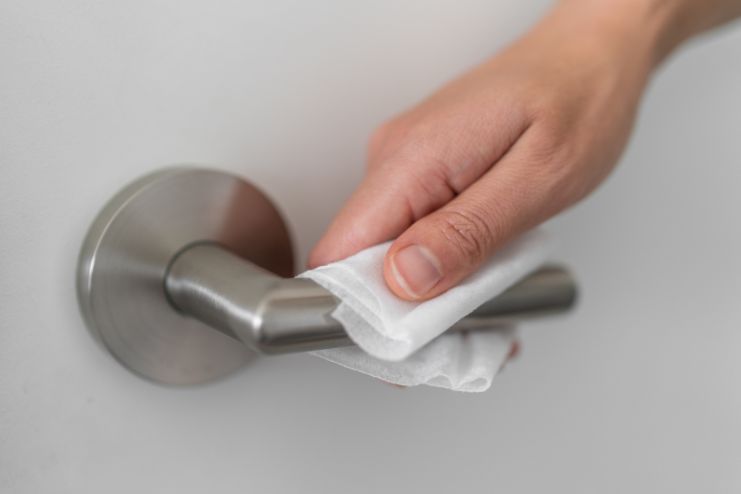
For people with arthritis, lever-style faucets and doorknobs are a great option. Using regular door knobs might be very difficult when you have arthritis. They need to be held tightly and twisted, which might hurt. The purpose of lever-style faucets and doorknobs is to simplify life for people with arthritis. The designers created these handles to be easier to use and more comfortable.
One of its main benefits is that lever-style faucets and doorknobs are easier to grasp. Compared to conventional round knobs, these handles are more extended and feature a more intricate pattern. It implies that those with limited competence can only hold the handle with a portion of their hand.
Additionally, lever-style faucets and doorknobs are more straightforward to turn. Because of their larger surface area and range of motion, you can turn the handle using your elbow or wrist instead of your fingers. This could be a lifesaver for people with hand pain.
Installation is frequently a do-it-yourself project and is easy. Choose lever handle styles that have pleasant grips and smooth edges. Pick long-lasting and corrosion-resistant materials, particularly for bathroom and kitchen faucets.
First, consider replacing fixtures that are used regularly, such as major entry doors, kitchen faucets, and bathroom sink faucets. Lever-style handles improve accessibility and give your house a sleek, contemporary look.
Tip 2: Anti-Slip Flooring and Carpets
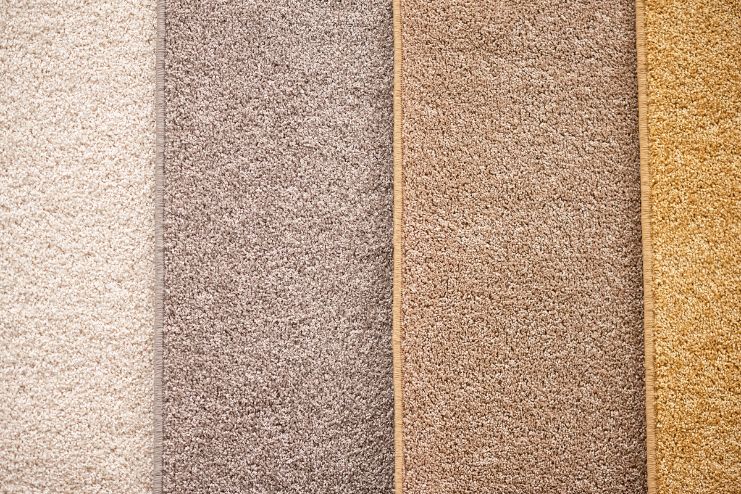
People with arthritis are particularly vulnerable to falls. People with arthritis are more likely to fall and have severe injuries from falls, according to the Arthritis Foundation. After a fall, you run a higher chance of fractures and significant injury if you have joint weakness or immobility.
Twenty percent of almost 10,000 persons aged 20 to 87 who participated in the study said they had experienced a significant decline in the year prior. Slippery surfaces can raise the risk of injury, especially in kitchens, restrooms, and entryways. Choosing flooring resistant to slippage can increase stability and lower the risk of falls.
The edges and corners of your carpet can be kept on the ground with rubber or Velcro tabs to prevent curling or lifting, which could cause you to trip. Stairs are a common place for falls, but you may lessen your risk of slipping by installing treads that improve traction. By providing stability, adding bars to your home’s walls that you can grab onto to assist you in standing up or moving around will help lower your risk of falling.
Carpets with low piles are better since they are simpler to walk on and less likely to cause trips and falls. Examine flooring frequently for wear and tear and quickly remove any damage or loose edges. For arthritis management, you can make your living area safer and more comfortable by adding anti-slip flooring and securely fastened carpets.
Read More: Expert Advice: 8 Ways to Support a Loved One with Arthritis
Tip 3: Grab Bars and Handrails
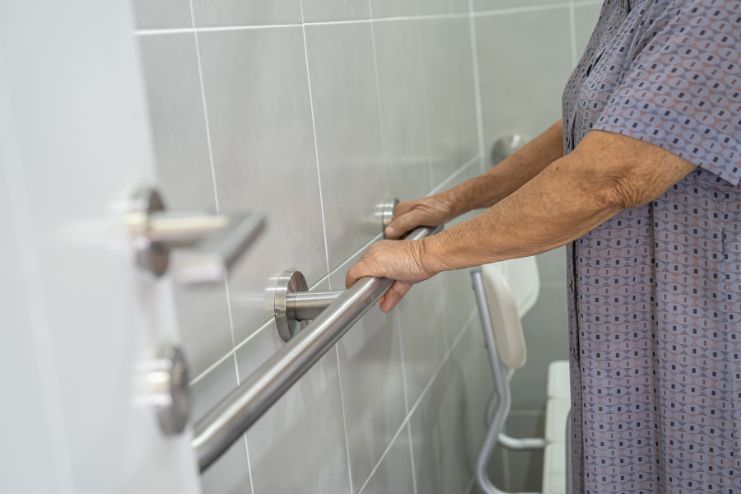
For those with arthritis, grab bars and handrails give crucial support by promoting stability and balance in high-risk regions. Grab bars are essential for home safety and accessibility, particularly for older adults and those with limited mobility.
These straightforward but efficient tools offer the assistance and security required to stop falls, a significant source of injuries among the elderly.
People commonly install handrails and grab bars in bathrooms near bathtubs, showers, and toilets, and they can also thoughtfully position them in hallways, stairwells, and bedrooms throughout the house. Their primary purpose is to provide a firm grip, assist people in moving securely, support their weight, and maintain balance.
Installing a grab bar is easy and can be done by a professional. You must determine where to place the bars and ensure you correctly attach them to the wall for a secure fit.
By holding onto something stable, patients can confidently carry out everyday activities, including using the restroom, climbing stairs, and getting in and out of the shower.
Additionally, grasp bars encourage self-reliance and independence. They allow people with arthritis to continue being independent and engaging in activities without continual help, enhancing their general well-being and confidence.
Tip 4: Adjustable Furniture and Height Modifications

For people with arthritis, height adjustments and adjustable furniture can significantly increase comfort and movement. Adjustable-height chairs, tables, and mattresses ease joint strain by facilitating sitting, standing, and lying down.
Working behind a desk can be very painful for people with arthritis. This illness causes the joints to expand, stiffen, and become inflammatory. Because of this, it may be challenging to grasp a pencil or place your hands on a keyboard. Although arthritis has no known treatment, a number of contributing variables can make the condition worse and should be avoided.
People with arthritis can effectively manage their pain and perform daily tasks at work or in their home office by investing in ergonomic furniture that supports their health. One excellent example of this kind of workplace equipment is standing desks.
A typical mattress causes spaces to form between your body and the mattress, depriving you of support in those places. You will, therefore, have to rely on your muscles to support you, resulting in more weariness, aches, and pains when you wake up. An adjustable bed that you can access with a single button can temporarily relieve your aching joints by allowing you to move into the most comfortable position.
When selecting ergonomic furniture, look for features like armrests, lumbar support, and padded chairs. Give priority to stable and fluid adjustments for simplicity of use. By implementing these changes, you may create a more comfortable and independent living space that is more functional and arthritis-friendly.
Read More: Arthritis-Friendly Quinoa Stuffed Bell Peppers: Ease & Flavor Combined
Tip 5: Smart Storage Solutions
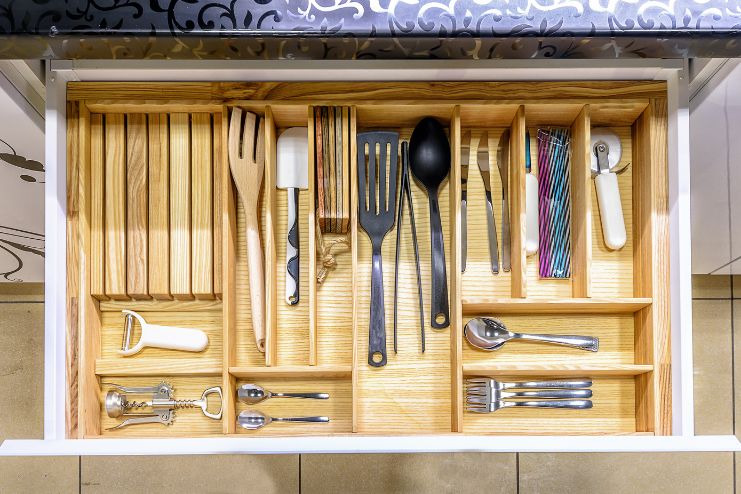
Innovative storage solutions can save strain and simplify daily duties for people with arthritis. Getting objects is easier when storage is accessible and well-organized since less bending, reaching, or lifting is required.
Think about adding pull-out shelves to pantry areas and kitchen cabinets. These shelves offer simple visibility and access to stored objects without reaching deep cupboards. Corner carousels and lazy susans are also excellent choices for optimizing storage without sacrificing usability.
Appliances such as electric can openers, food processors, and slicing mandolins make work easier. Items stored high or low can be retrieved using long-handled instruments with a grasping mechanism. Utensils with built-up handles and grips are more straightforward to hold and cause less strain on finger joints. Keep a rubber jar opener in the kitchen, or install a fixed one.
Use flexible shelving units and drawer organizers in bathrooms and bedrooms to keep necessities close at hand. Storage mounted on the wall can reduce bending and free up space. For products used often, use clear storage boxes with simple-to-grab handles.
Keeping the area neat and clutter-free improves safety and decreases the chance of any trips and falls.
Read More: 10 Tips for Managing Arthritis Pain Without Medication
Tip 6: Lighting and Switch Adjustments
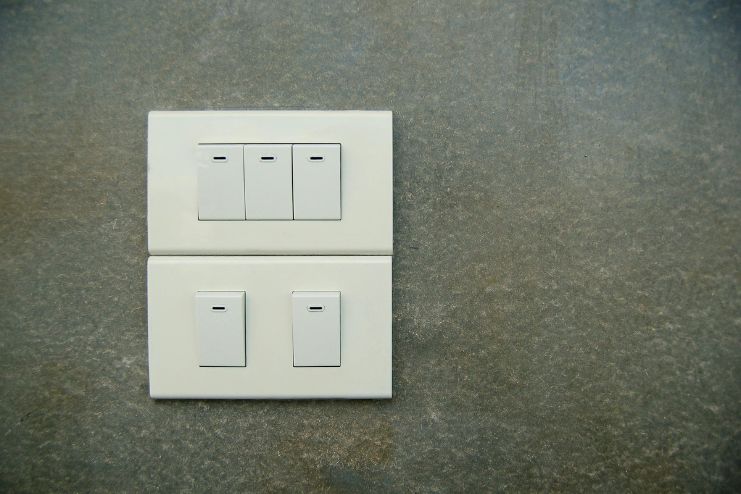
Adequate lighting is essential for people with arthritis to reduce eye strain and prevent falls. Well-lit areas increase visibility, which facilitates moving around the house. Easily accessible switches and movable lighting settings further improve convenience and safety.
Install motion-sensor lights in stairwells, restrooms, and corridors for automated lighting. Instead of twisting or holding tiny switches, think about utilizing voice-activated or touch-activated innovative lighting solutions. Other useful options include floor lamps with foot pedals or table lamps with big, easily accessible switches.
When choosing light switches, choose rocker-style switches because they are simpler to use than conventional toggle switches. Position switches at easily accessible heights, ideally 36 to 42 inches off the ground, to accommodate standing and seated users. Implementing these changes may preserve your independence while creating a more secure and comfortable living space.
Tip 7: Bathroom Adaptations
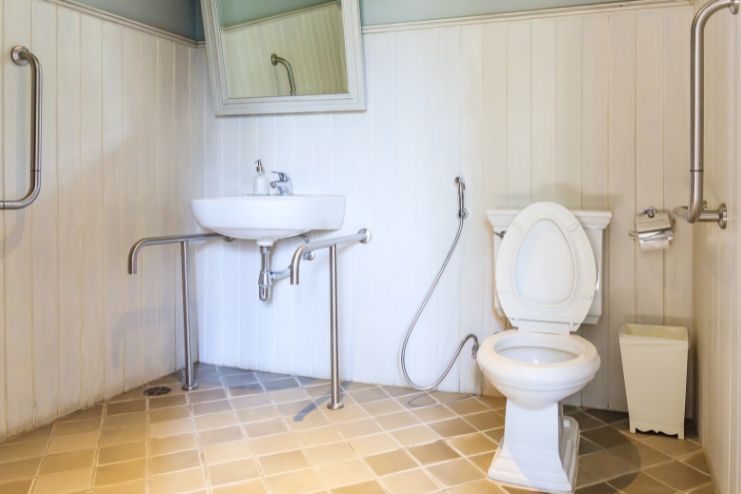
It is crucial to design a safe and comfortable restroom for those with arthritis. Putting grab bars next to baths, showers, and toilets provides essential assistance for standing, sitting, and staying balanced. Choose textured, non-slip bars to give a firm grasp.
Designing a bathroom that enhances everyday functioning, lessens physical stress, and lowers the chance of falling can make a significant difference.
You can purchase an adjustable toilet to install over your current toilet or use it independently. You can adjust the height with them for greater comfort. Increasing the height makes getting down to and up from the toilet more manageable, reducing pressure on your knees.
Walk-in showers with low or no thresholds are better than bathtubs for reducing the chance of stumbling. For further versatility, consider including a handheld showerhead and a shower chair or bench for sitting bathing.
Slip-resistant flooring and non-slip mats are crucial for preventing falls. Make sure the bathroom lighting is also uniformly bright. By making these modifications, you can improve the comfort and safety of the bathroom and encourage more independence for those with arthritis.
Read More: Supportive Footwear for Arthritis: 6 Orthopedic Shoes for Pain-Free Walking
Conclusion
Home changes can significantly improve the quality of life for those with arthritis. You can make your home safer and easier to access by adding upgrades like grab bars, anti-slip flooring, lever-style doorknobs, adjustable furniture, and clever storage options. Modifications to the lighting and bathroom can further improve comfort and independence.
These adjustments lower the chance of falls and joint pain and increase self-assurance and independence in day-to-day tasks. Every alteration you make, no matter how big or small, makes your house more arthritis-friendly.
Consider making these considerate adjustments to enhance your well-being and create a comfortable living environment. Making accessibility and safety a top priority guarantees you can move around your house comfortably and confidently.
References
- https://www.hss.edu/conditions_assistive-devices-for-the-hand-small-joint-protection.asp
- https://pmc.ncbi.nlm.nih.gov/articles/PMC2897244/
- https://www.arthritis.org/getmedia/e1256607-fa87-4593-aa8a-8db4f291072a/2019-abtn-final-march-2019.pdf
- https://osgpc.com/preventing-slips-and-falls-with-arthritis/
- https://creakyjoints.org/living-with-arthritis/preventing-falls-with-arthritis/
- https://willowbrook.co.uk/advice-guides/4-surprising-ways-adjustable-beds-can-relieve-arthritis/
- https://www.arthritis.org/health-wellness/healthy-living/managing-pain/joint-protection/self-help-arthritis-devices
- https://www.arthritis.org/health-wellness/healthy-living/daily-living/life-hacks-tips/adapting-your-house
- https://www.mayoclinic.org/healthy-lifestyle/healthy-aging/in-depth/fall-prevention/art-20047358
- https://creakyjoints.org/living-with-arthritis/arthritis-friendly-bathroom-tips/
- https://creakyjoints.org/living-with-arthritis/going-to-bathroom-with-arthritis/
In this Article

















